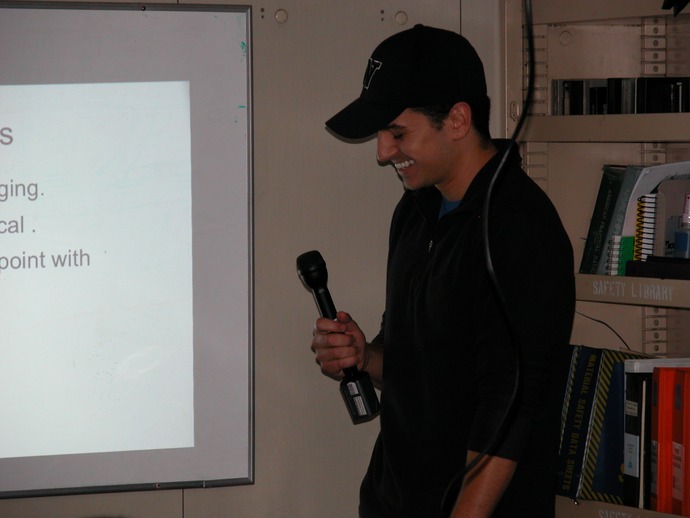My idea is to use the abundance of a specific bacteria Beggiatoa that thrives at hydrate vents to produce an estimation of the quantity of gas seeping from the sea floor. The question I am asking is:
“What is the flux of methane through bacterial mats at particular site and how much is making it into the water column?”
The importance of this research deals with many of the questions already being asked today about global warming for several reasons, methane in combination with water produces CO2, methane remains in the atmosphere for 9-15 years, and is 20 times more effective in trapping heat than CO2. These reasons show why understanding and obtaining precise estimates on the amount of stored and seeping methane is important.
Many professionals have studied hydrate vents and for the purpose of this project I will be referring to data from Torres et al., (2002), Fluid and chemical fluxes in and out of sediment hosting methane hydrate deposits on Hydrate Ridge, OR, I: Hydrological provinces. Specifically I will be using the data CH4 concentrations, CH4 flux, and fluid flux through bacterial mats at Northern Hydrate Ridge.
Assumptions I am making:
1. Fluid flow rates are unchanging.
2. Bacterial mats are identical globally.
3. Methane is at saturation with respect to gas hydrate within the sediment.
My approach to the question “What is the flux of methane through bacterial mats at a particular site?” involves me to only select a very discreet area. Utilizing the Woods Hole Oceanographic Institution's ROV Jason we were able to take very detailed photographs on average 4.5 meters above the sea floor. Once the area has been photographed a mosaic is made and interpretations can be made from the image. We know that bacterial mats only inhabit areas where there is seeping methane due to their energy source sulfide coming from the by-product of methane oxidation by a specific species of Archaea. Also Beggiatoa only live in very thin mats, otherwise the top bacteria would simply starve to death, this helps me in my study by being able to assume the density of the mats on average is the same. So from this knowledge we can assume the large areas covered by Beggiatoa must have methane seeping through them at a constant rate and from the Torres et al. (2002) research site that we know the estimated concentration and fluid flux of.
From here I will manually calculate the total area of the site and calculate the percent abundance of bacterial mats. This will give a total area that is inhabited by bacterial mats within the site. Using the concentration of methane and the fluid flux I am able to calculate an estimated amount of methane in kilograms that is passing through the bacterial mats within the site for a particular time (e.g., days, years).
This example would also show the amount seeping into the water column if a large percentage of the methane was not being oxidized by organisms around the vents. So for the second question “How much methane is making it into the water column?” I will have to estimate the amount being oxidized. As an example I can say 70 percent of all methane that makes it to the sea floor surface is oxidized, then the remainder is what actually makes it into the water column. This can be said because the amount of methane within the water column decreases dramatically within several meters above the sea floor, so in actuality the percentage being oxidized may be closer to 90 percent.
The important idea is that knowing the raw amount of methane seeping through the vents at biological sites allows me to take a step back and analyze different scenarios that may arise from habitat destruction, ocean acidification and many others. It is also possible to use this idea on a larger scale once an estimated number of bacterial mats per square kilometer of ocean can be obtained.


